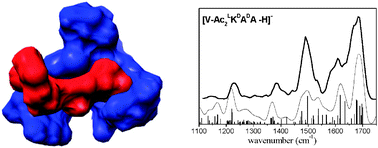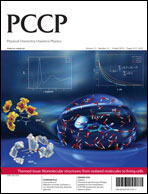Probing the specific interactions and structures of gas-phase vancomycinantibiotics with cell-wall precursor through IRMPD spectroscopy†
Abstract
Biomolecular recognition of

- This article is part of the themed collection: Biomolecular Structures

 Please wait while we load your content...
Please wait while we load your content...